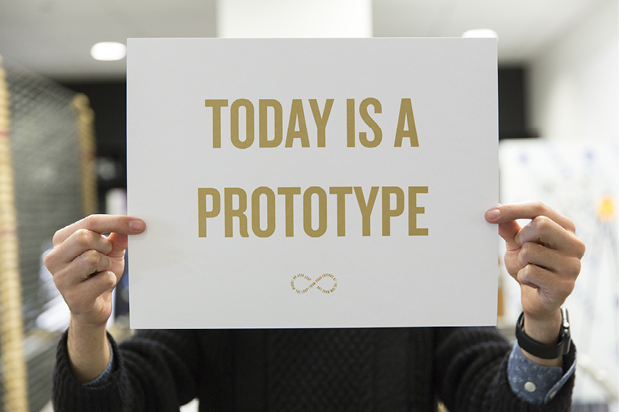[ 9 ]
What Have We Learned
Now that we’ve reached the end of this book, you should be inspired and empowered to create prototypes for your work. You’re on your way to developing a thirst for prototyping and testing your ideas, in all areas of your work and life. You’ll begin to see yourself testing ideas at a low-fidelity level, and consciously learning and improving them. You might notice yourself reframing design requirements at work into user-centered challenges. Instead of “I need this widget to export data reports,” you’ll think “how can I make the most intuitive data reporting interface for my user?” You might even start hacking fun electronic projects to try in your home—like an automatic light color changer, or a doorbell that tweets whenever someone rings.

Figure 9-1
Each day is a prototype that you can improve on tomorrow, designed and printed by Patrick Chew
Hopefully you’ve learned a ton and now feel capable of building the right prototype for your situation. You now have a strong foundational understanding of what needs to be prototyped and the process of prototyping. You can choose the software you’d like to learn, and apply this new knowledge to framing and scoping the prototypes you build.
If you haven’t yet tried it, go grab a stack of Post-its and take a minute to draw out a new app idea or device interface as a paper prototype. Or write out a user flow for that ...
Get Prototyping for Designers now with the O’Reilly learning platform.
O’Reilly members experience books, live events, courses curated by job role, and more from O’Reilly and nearly 200 top publishers.

